Women’s Suffrage Stories in the Archives
On August 18, 2020, the United States celebrates the 100th anniversary of the ratification of the 19th Amendment to the Constitution, which declared that the right to vote “shall not be denied…on account of sex.” Several collections in the National Air and Space Museum Archives provide short stories along the long path of the women’s suffrage movement and the 19th Amendment.
:focal(720x512:721x513)/https://tf-cmsv2-smithsonianmag-media.s3.amazonaws.com/blogging/featured/13019h.jpg)
On August 18, 2020, the United States celebrates the 100th anniversary of the ratification of the 19th Amendment to the Constitution, which declared that the right to vote "shall not be denied...on account of sex." Several collections in the National Air and Space Museum Archives provide short stories along the long path of the women’s suffrage movement and the 19th Amendment.
Aaron Sargent Introduces an Amendment
On January 10, 1878, California senator Aaron Sargent introduced an amendment to the Constitution: “The right of citizens of the United States to vote shall not be denied or abridged by the United States or by any State on account of sex.” Sargent’s wife, Ellen, was a suffragist and personal friend of Susan B. Anthony. Sargent even received permission to bring suffragists to testify before the Senate Committee on Privileges and Elections. The 28 word amendment sat in committee for nine years. When it was brought before the full Senate in 1887, it was defeated. The amendment finally passed Congress in 1919 and received ratification votes by enough states to become the 19th Amendment on August 18, 1920.
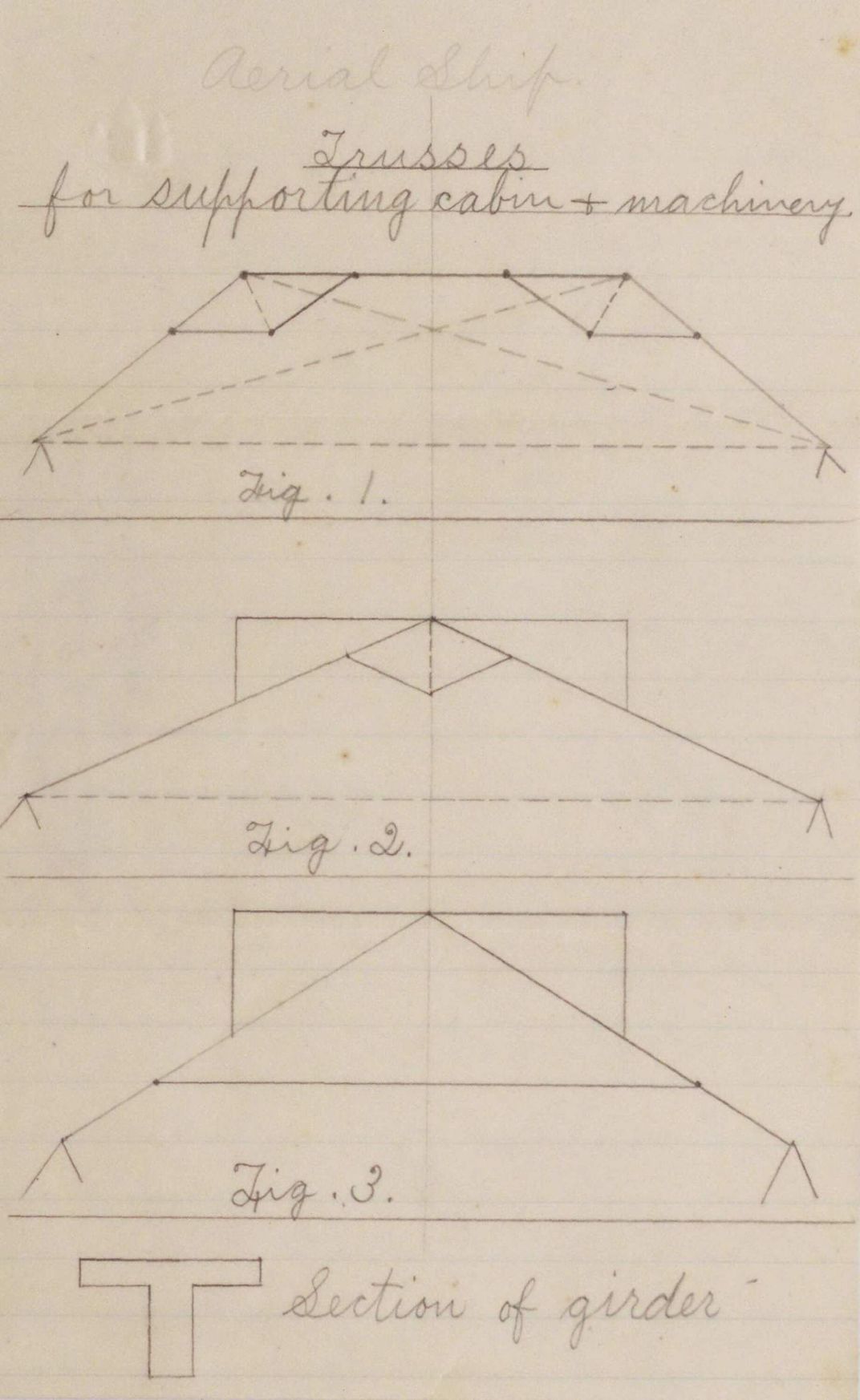
Aaron Sargent left the Senate in 1879 and was appointed Minister to Germany in 1882. While in Berlin in June 1883, he sketched a series of drawings for an “aerial ship.” These early dirigible designs can be found in the National Air and Space Museum Archives collections.
Ruth Law Flies for Votes for Women
In 1912, when Ruth Law purchased her first aircraft, the movement for women’s suffrage had won victories in individual states, but was still working toward a constitutional amendment. In May, New York City held its third annual suffrage parade. Meanwhile, Orville Wright wouldn’t even sell the Wright Model B directly to Law, insisting that her husband, Charles Oliver, purchase it. Wright also refused to teach her how to fly since he didn’t think women were mechanically inclined. She earned her license in November 1912.
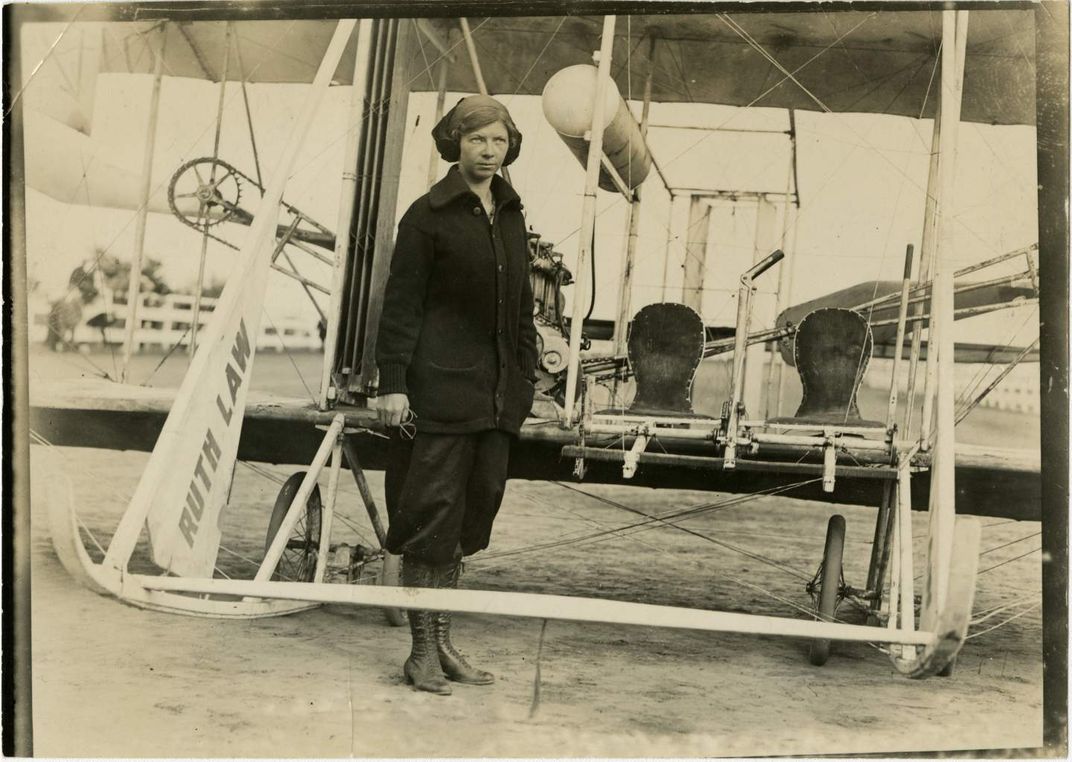
Law staunchly believed that women were capable of anything. So that other women would not have the difficulties she did in learning to fly, she travelled to Seabreeze, Florida, in January 1913 to give flying lessons to women out of the Hotel Clarendon. She also made a name for herself by giving rides to passengers. John D. Rockefeller passed on the opportunity, but H.F. Biggar, his private physician, went instead.
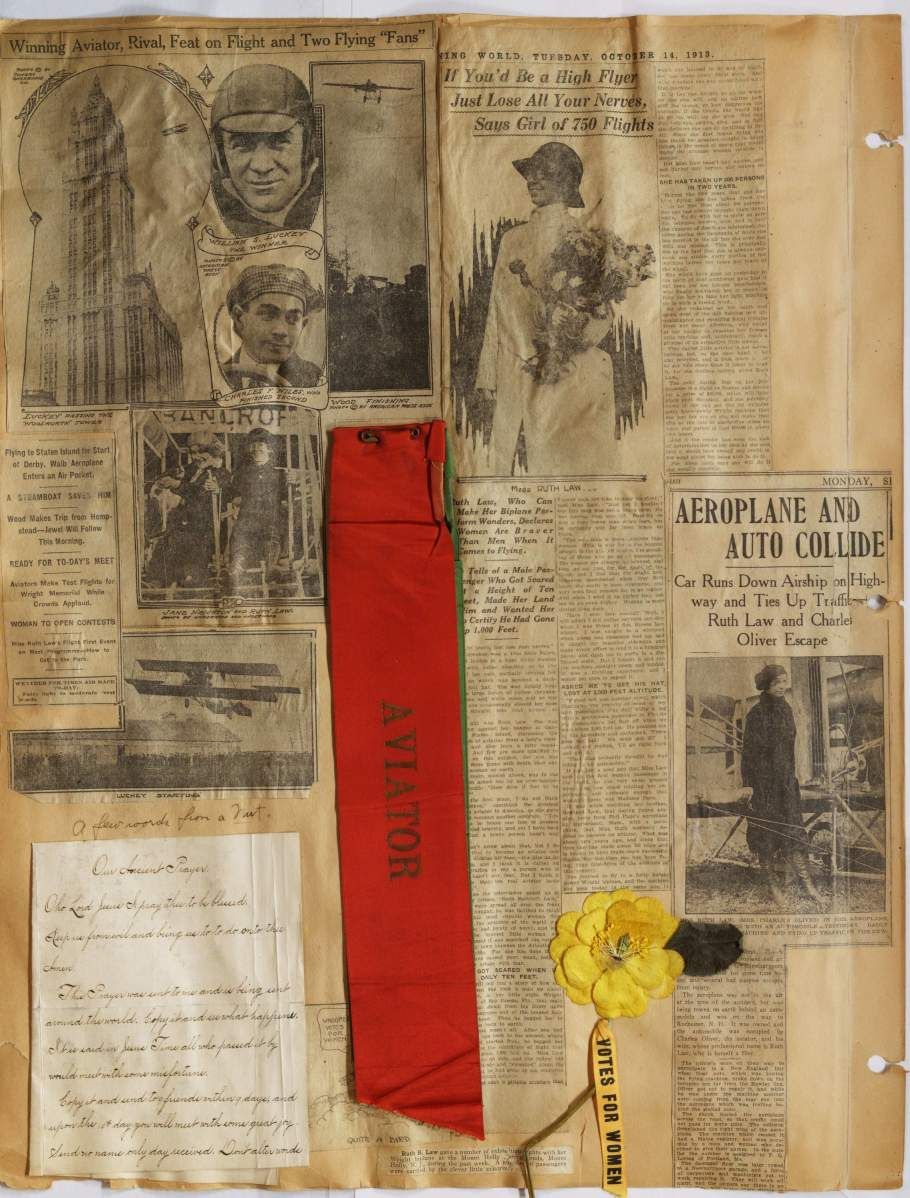
Ruth Law’s scrapbook in the Archives doesn’t hold many personal writings expressing her beliefs on women’s suffrage, but much can be inferred from materials in her personal scrapbook. At the bottom of one of the pages, a bright yellow rosette stands out among the newspaper clippings: “Votes for Women.”
Exactly where Law acquired her rosette is unknown. She did participate in an overnight suffrage and aviation party held at the Hempstead Plains aviation field on Long Island on September 5 and 6, 1913. According to the Evening Post, the event was sponsored by the New York State Suffrage Association, with Portia Willis in charge of the daily routine. The New York Times estimated that about 200 women and eight men participated in a parade down the row of hangars. Marjorie Brooks led the marchers while riding astride a white horse belonging to Josephine DeMott Robinson, a local celebrity and Barnum and Bailey Circus performer. She was accompanied by several other women on horseback, including Josephine DeMott Robinson, Ethel Robinson, and Grace Tydeman. Other noted participants included Rhoda Glover, nicknamed the “oldest suffragist in Nassau County,” and Harriet Burton Laidlaw, Manhattan Borough Chairperson of the Woman Suffrage Party. The Evening Post also mentioned Carrie Chapman Catt and Alva Belmont as participants.
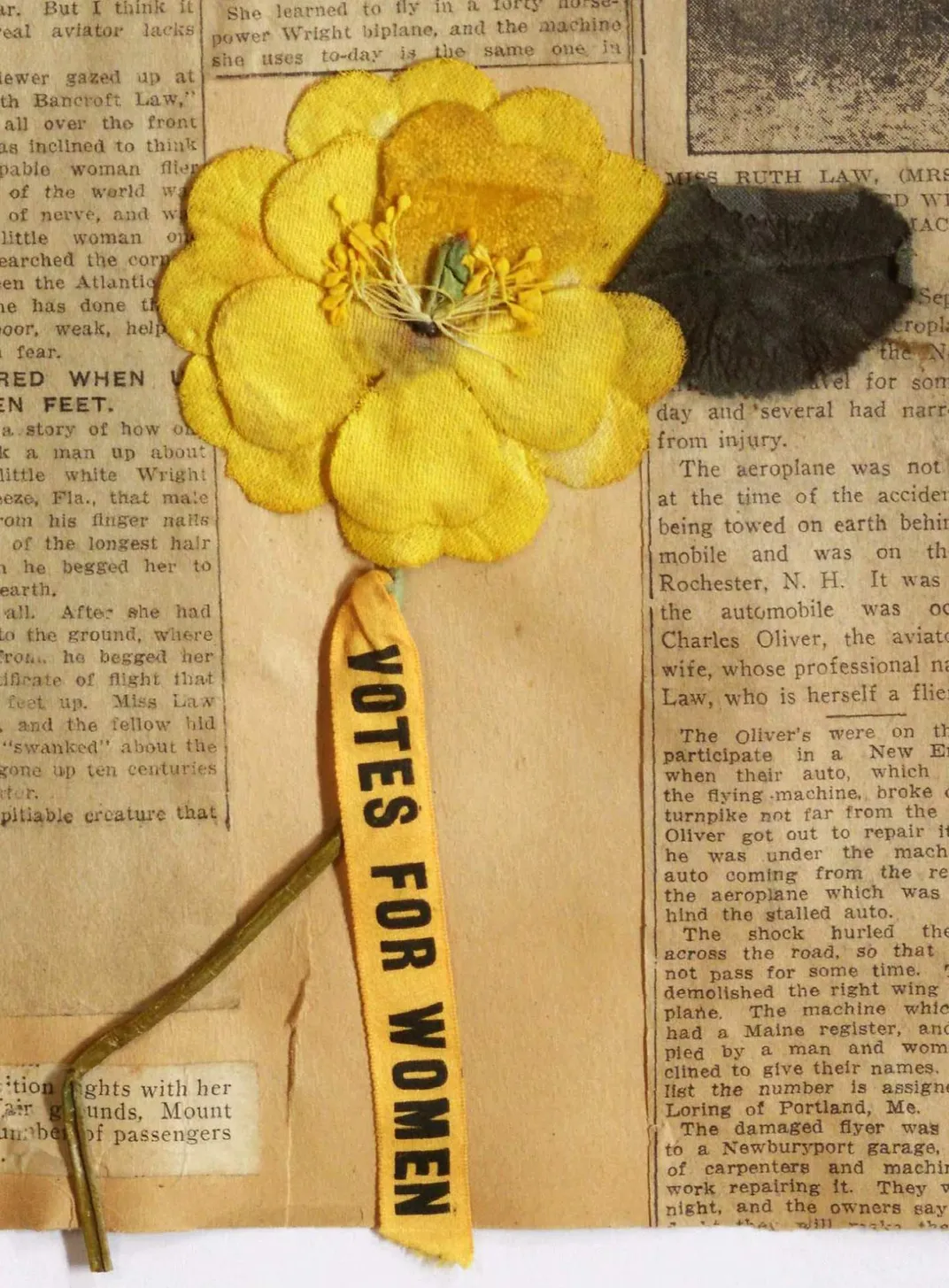
The weather played a role in reducing the number of flights that could be made, but after the parade, Law offered a flying demonstration and rides to a few lucky marchers. During a flight with Oscar Danielson, a member of the Long Island Men’s League for Women’s Suffrage, Law lost a spark plug and had to make an emergency landing in a swamp. The New York Times reported this story with the headline, “FINDS USE FOR HUSBAND WHEN AEROPLANE BALKS: RUTH LAW GETS OUT OF SWAMP ONLY BY HIS DASH FOR SPARK PLUG.” The author notes that Law’s husband had been “…trailing her on foot. ‘Charley, run and get me a spark plug,’ she commanded.”
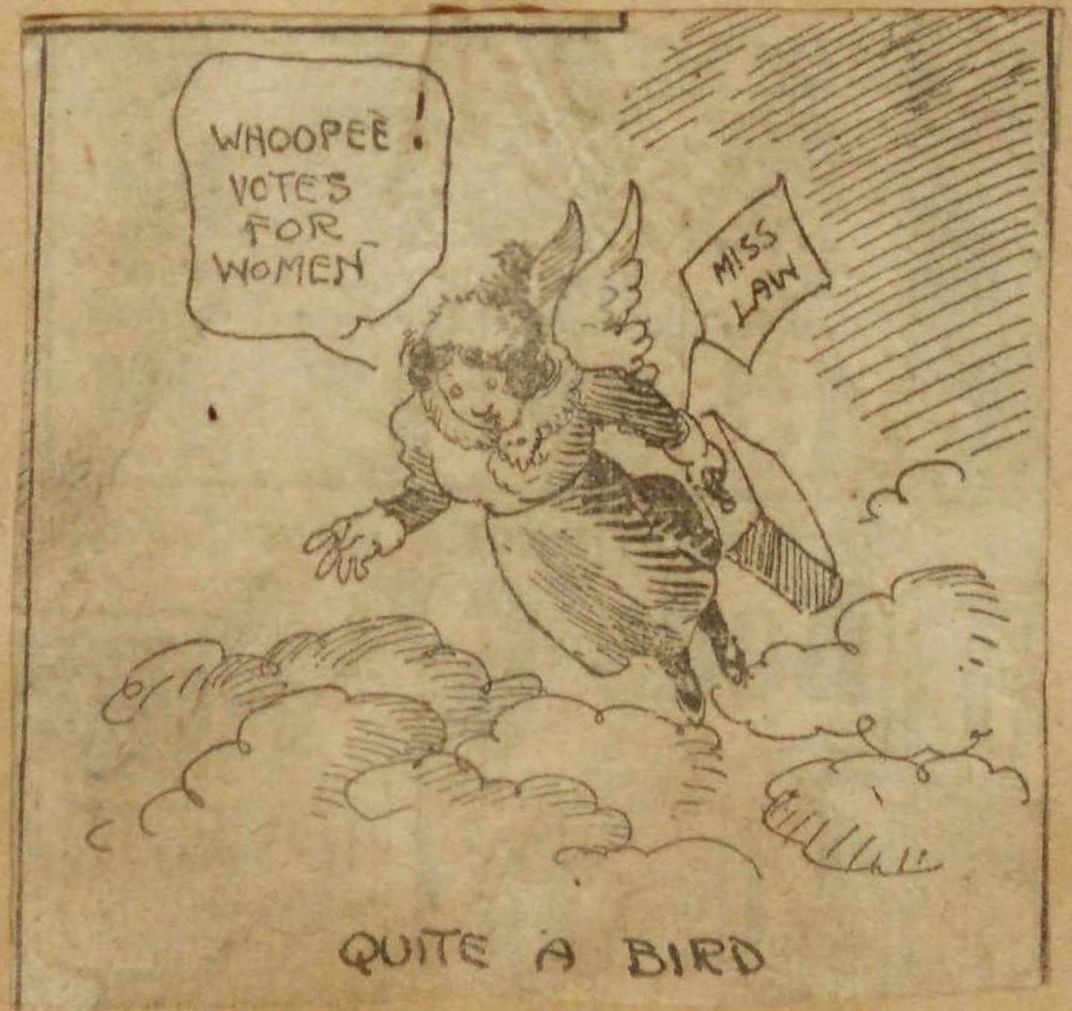
Reporting on the women’s suffrage movement ranged from admiration to amusement and condescension to outright antipathy. On the same page of her scrapbook as her rosette, Law attached an editorial cartoon from an unidentified newspaper. Captioned “Quite a Bird,” the cartoon features a woman with wings flying above the clouds, carrying a suitcase with a tag reading “Miss Law” and saying “Whoopee! Votes for Women.” The Evening Star in Washington, DC, published this pithy editorial comment on December 21, 1916: “Advocates of woman suffrage are enthusiastic over Ruth Law’s achievements. Their admiration must meet with general approval, even though it may not be clear just what the art of aviation has to do with picking a winner in an election.”
When reading “direct” quotes from Law on her feelings about suffrage, it can be difficult to determine how much she was truly revealing or whether words were being placed in her mouth. In November 1916, Law set a long-distance record, flying from Chicago to New York. On November 20, the New York Times published an article highlighting her accomplishments, telephoned in by Law. Towards the end she commented, “I suppose I ought to say that I am in favor of woman suffrage—but what has that got to do with it.” Her final words were: “Now I’m going to eat dinner.” A similar article in the New York Tribune quoted Law, “Me a suffragist? Oh, I don’t know. I move around so much that if I ever vote it would probably have to be from some upper-air polling place.” Although Law’s ties with women’s suffrage were known, she still had to walk a line and to sell her accomplishments to an audience whose feelings could be ambivalent or anti-suffrage.
Law’s accomplishment was noted by the New York State Women’s Suffrage Party, which sent her the following telegram: “Six hundred women followers of those who seventy years ago began the struggle without which no woman’s victory today would be possible are in session in Albany. They will be here until Thursday night at 10 P.M. Why not fly up here and be one of us? Help us make more conquests possible for more women.” Law responded, “Woman’s sphere is wherever she chooses to be.”
In December 1916, Law had another opportunity to support the New York State Women’s Suffrage Party. For the first time, the Statue of Liberty was to be illuminated by electric lights, triggered by President Woodrow Wilson on his yacht the Mayflower. The suffragists wished to “bomb” the president with suffrage petitions and pamphlets from the air. Law had to decline, as she was already a scheduled part of the ceremonies, circling the statue with an illuminated plane with “Liberty” on the bottom. Leda Richberg-Hornsby gamely accepted the role, though the weather forced her to crash land on Staten Island.
Suffragists Take to the Skies
Other collections in the National Air and Space Museum Archives touch on how the women’s suffrage movement took advantage of the modern technology of flight to further their cause and how some women aviators would give complicated answers to the question: “Are you a suffragist?”
In a 1962 memoir, found in the United States Women In Aviation Through World War I Collection, Bernetta Adams Miller recalled her invitation to fly over the Woman Suffrage Parade of 1913 in Washington, DC. Having learned to fly at the Moisant Flying School, Miller was given the opportunity in fall 1912 to travel to College Park, Maryland, where she became the first person to demonstrate a monoplane before U.S. government officials. On January 15, 1913, the Washington Post reported that the march planners sent a telegram to Miller asking her to fly over the parade with an attached “Votes for Women” banner and bearing a message of the “progress of women in the modern times” to the central tableaux of “Miss Columbia.”
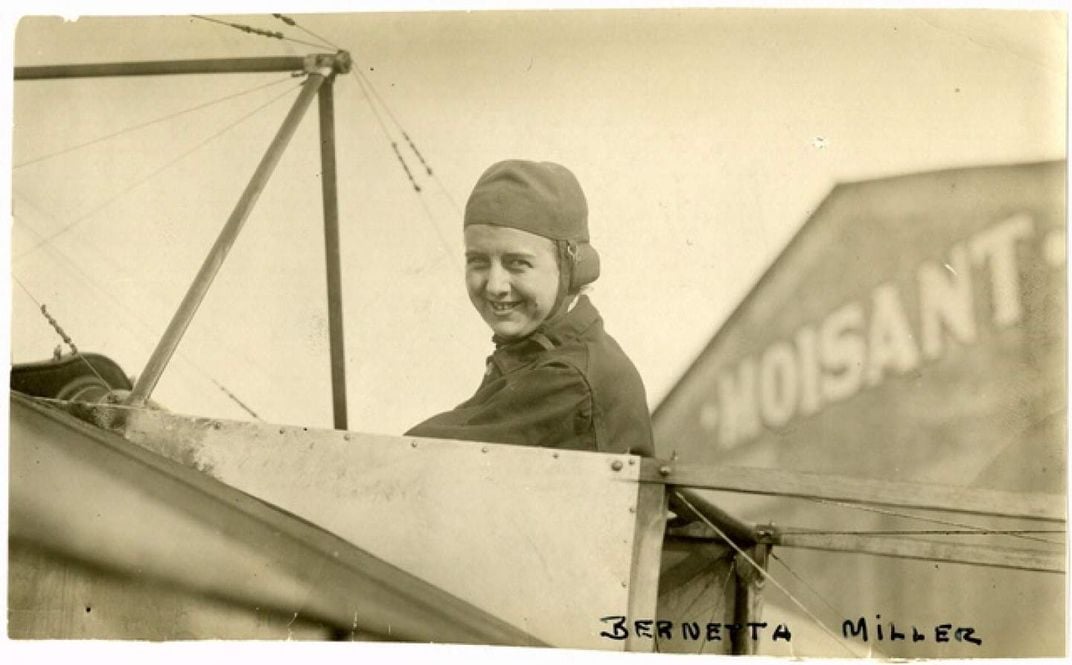
Miller declined. In 1962, she wrote that she wished she had accepted. “I was not afraid of making the flight—sizeable for that period—but I was afraid of losing my bearings. Geography has such a way of changing when one is in the air. No doubt I could find the Capitol and Pennsylvania Avenue, but how about finding College Park or any good landing spot? I was too inexperienced then, a fledgling, in fact.” The march proceeded on March 3 without an aviator.
Although Alexander Graham Bell is known best as the inventor of the telephone, he also had an intense interest in aviation. He was a member of the Aerial Experimental Association, along with Glenn Curtiss, Thomas Selfridge, and others. Bell created over 100 scrapbooks of early aeronautical clippings, which he donated to the Smithsonian. One clipping from August 13, 1910, features Margaret Foley’s hot air balloon flight in Lawrence, Massachusetts, in which she released suffrage materials from aloft. (The original photographs can be found in the Schlesinger Library, Radcliffe Institute, Harvard University.)
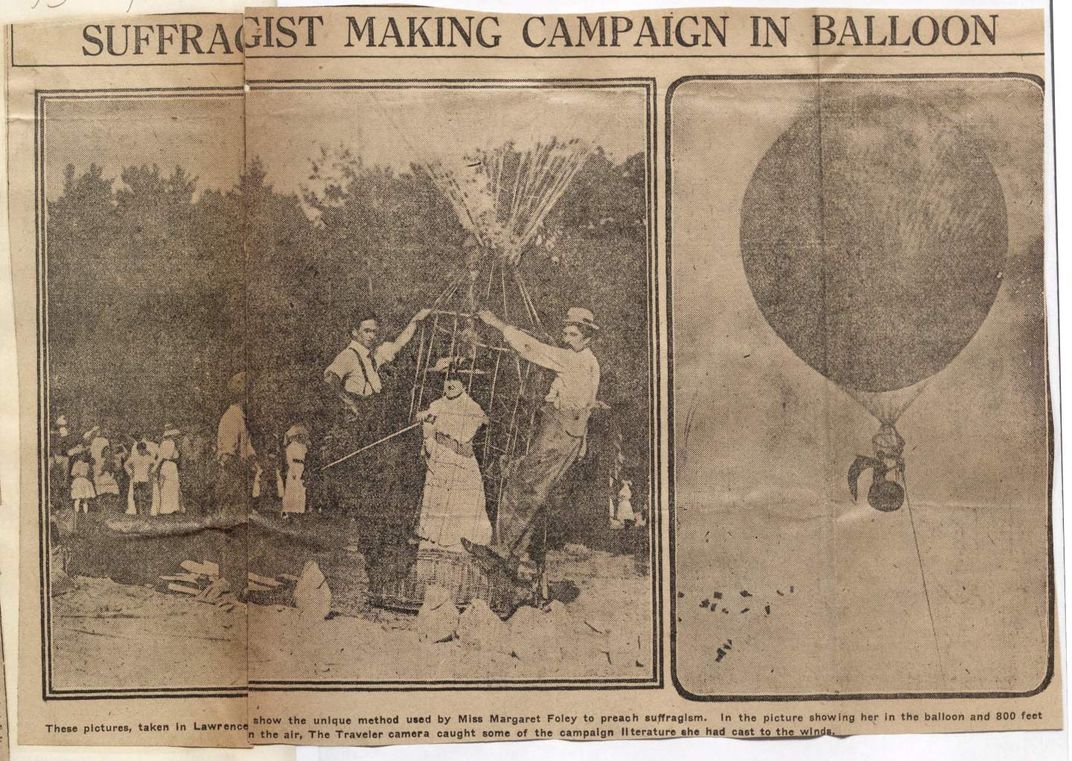
Bell’s clippings also feature an August 2, 1911, interview with Harriet Quimby, the first American woman to earn her pilot’s license. The subheading reads, “Drinks Coffee Before She Goes Above the Earth—Is Not a Suffragist.” Later in the article, Quimby is quoted, “Never played bridge and I am not a suffragist, though many women want me to name my monoplane after a great suffrage leader. They have suggested ‘Pankhurst’ and ‘Catt.’ We called the machine in which I learned ‘Genevieve.’ It was so versatile.” Like with Ruth Law, it is difficult to tell Quimby’s true feelings, as she tried to focus on her own accomplishments.
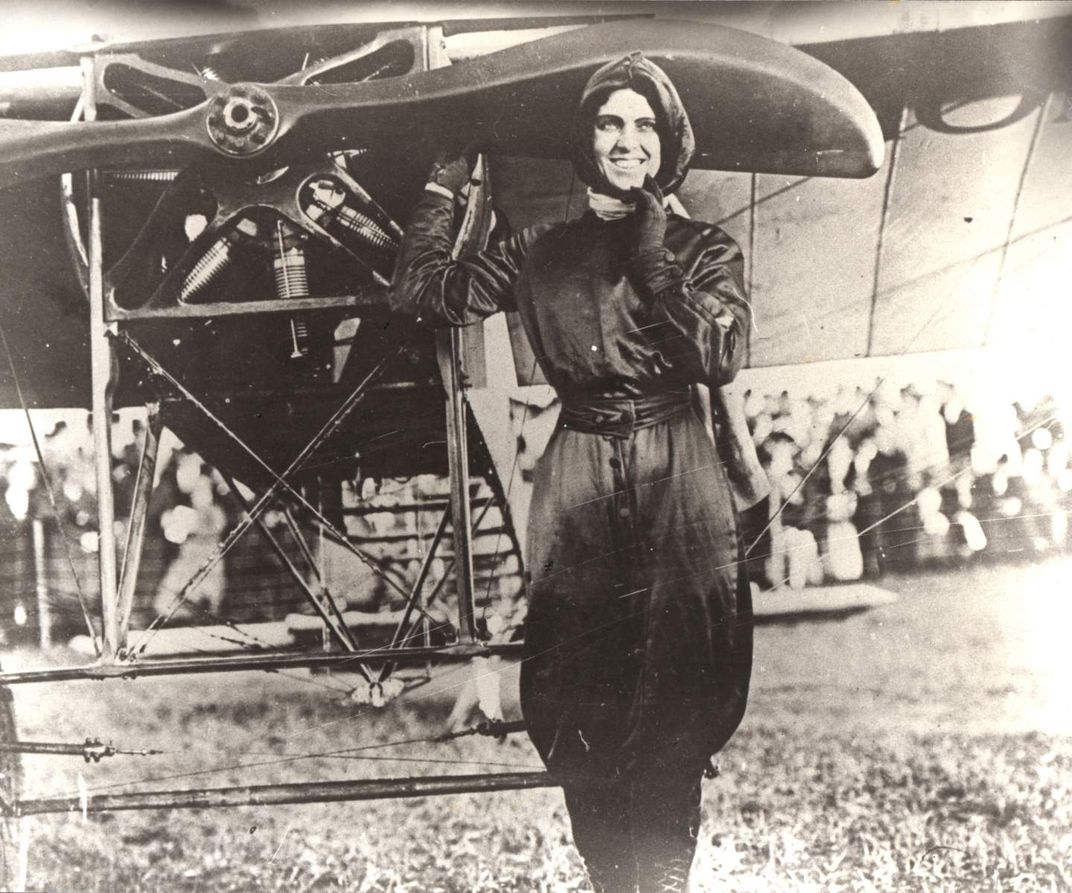
E. Lilian Todd had a mechanical mind from a young age. Her first patent was for a copyholder for a typewriter. In 1906, Todd brought an airship and airplane design of her own to the Aero Club of America exhibition. She formed the Junior Aero Club in 1907. Under the patronage of Olivia Sage, a wealthy widow, Todd designed and built an aircraft, becoming the first woman to do so. D. Masson successfully flew that aircraft in November 1910. Todd reportedly never learned to fly, though she often expressed the hope that she would.
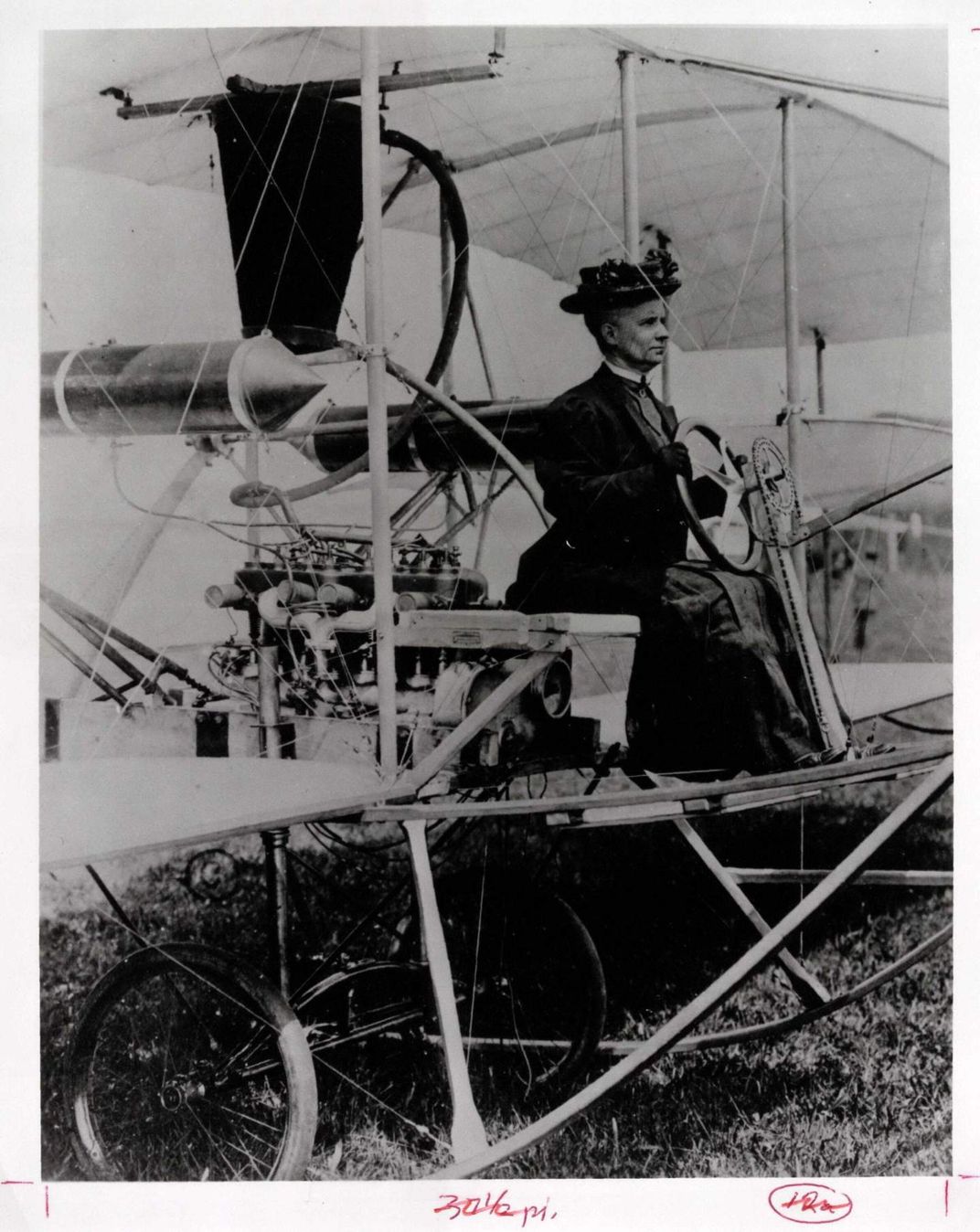
A July 28, 1910 New York American article quoted Sage’s conversation with a woman reporter: “I am neither a suffragette nor a suffragist. I believe in the middle course. I believe these questions of sex equality will solve themselves to some extent as women become more adept and skilled in the work now exclusively supposed to be within the sphere of men.” Sage’s relationship with the suffrage movement was complicated. She had signed the 1894 New York Women’s suffrage petition and was hosting suffrage meetings in her parlor, motivated in part by the news that the governor of New York had vetoed the appointment of four women to Troy Female Seminary’s board of trustees. In 1900, she was an active member of the National American Woman Suffrage Association (NAWSA). In 1908 she joined the Equal Franchise Society, which emphasized the difference between “suffragist” and “suffragette,” a term implied to be more violent and militant. But Sage’s overall philanthropic efforts were directed more towards religious organizations and women’s education than suffrage. When asked in November 1910, Lilian Todd, the actual woman behind the airplane, echoed her patron’s sentiments: “I am not a suffragette…but I decided long ago that if a man can fly a woman can….“
These stories can only scratch the surface of a multi-faceted women’s movement that took many years to realize success in the passage of the 19th Amendment in 1920. And even then, universal suffrage in law wasn’t universal in practice. These tales of early aviators and women’s suffrage feature only white women—Bessie Coleman, the first black woman aviator, had go to France to earn her license in 1921. Black women played their own role in the suffrage movement and in the movement for voting rights to live up to the promise of the 15th and 19th Amendments. Throughout August and beyond, the Smithsonian American Women’s History Initiative will be hosting events and sharing information about the 19th Amendment and women’s accomplishments.
